I had been skiing a bunch of skis this spring and, for reasons I’ll get to, was basically ready to give up on writing ski reviews forever when Barry and Jason told me that two dudes hucked a crevasse on the Upper Nisqually protecting the Fuhrer Finger on Mount Rainier. I immediately broke into a cold sweat. Could I do that? By their description, it sounded like a full-on Yoda situation—there is no try, only do.
Even typing this I’m all Marshall Mathers over it. My palms are sweaty, Vomit on my sweater already, Mom’s spaghetti.
For me, the answer is no. I should not huck anything where failure isn’t an option.
The thing about the skis I was testing is that they were all really good, and although I was having a lot of fun in the process, I started to think, just pick a pair and go skiing. Then this thing about hucking the crevasse. Interestingly, I doubled down on my ski testing for reasons I am not proud of and will address in my conclusion.
Flax
Flax stems are toxic. Flax seeds are healthy. The world is not black and white. Some skis are made with flax stem fibers. Many cereals call for the seeds. You can use the whole plant; it just has to be the right part for the right purpose. So, the skis. I have been skiing on three pairs of flax-containing skis off and on over the spring. And to further befuddle the situation I threw in some additional skis to widen my perspective.
Not long after publishing the DPS 100 / 105 review (here), I picked up a pair of Black Crows Solis’. This ski has been thoroughly reviewed here. Having skied a handful of skis aimed at versatility, I wanted to take on a true purpose-built ass-kicker. The Solis looked to be just the thing. The sidewalls on mine say, “I’m really hard.” Which, I don’t know, man. In whatever context that may or may not be true, it’s just not something I would announce. The truth that Gavin pointed out, and which I also found to be true, is that the Solis is a far more versatile ski than its sidewalls and the other marketing around it would have you believe. And that does nothing to take away from its intended purpose. Which, as far as I can determine, is to hold an edge. Which it does. But it also has a low camber, and it has a pretty long tip rocker. The result is a nice pivot. Hold an edge, check. Jump turns, check. Quick pivot, check. Easy skidded turns, check. Big ass 25m radius carves, check. It is made for steep skiing. But is this the ski you should have for that purpose?
When Hass and Fabrikant skied in Pakistan, they took the bright yellow Black Crows Orb Freebird while their partner Brendan O’Neill hauled a feathery Movement Race Pro 85. Certainly, that was steep skiing, and in the case of the Orb, that is a softer, lighter, tighter radius, and narrower ski. It is, in many ways, the opposite of the Solis and boasts similar attributes toward a pretty identical use. What the hell?
Enter the Fat-ypus L’Toro. This has been my wife’s go-to touring ski after having been on the 4FRNT Raven for several seasons. (And if you get a libation in me, you’ll know, too, I upvote Fat-ypus, generally.) The L’Toro gets a 10/10 on fun. It has a full-length camber and 20m radius but is soft in tips and tails and strong underfoot, where it is a versatile 100mm wide. On paper, it has a lot in common with the Orb. Additionally, it’s a good ski for powder (though this one, for powder, is too short for me); it’s super quick and maneuverable, holds a pretty good edge, and is damp. It’s built in the U.S.A. There is a lot to like about it. And if one were to really want a L’Toro specifically for hard-snow skiing, there is a flat tail version and a stiffer (“athlete flex”) version. That would be a tempting American-made option to take on the Orb. And it’s super addictive to say both ‘Orb’ and ‘L’Toro’ with a French accent.
What about these Flax skis, then? Let’s run through some of the skis I’ve been on.
Though of touring weight, the Line Vision 96 (full review here) is heavier and thus damper than both the DPS 100 and 105. Its build is more similar to the 100. The punchline, though, is that they’re all really great. They edge a little this way,and give up a little that way. See my professional chart below. Me, I like stuff made close to home, so if I can get something built in the U.S., especially Utah or Colorado, that is certainly my preference.
Against my nature, I tried to get numerical. While I’ve skied each of these skis on at least 10 tours, and all of them in-bounds, too, the following attempt at seriousness is based on a mere four almost identical tours: Same place, same conditions more or less, and same sweet spring weather. There were, however, some experimental control problems right out of the chute. Mostly minor snow differences, and also some drinking and parties. I’m not sure how impactful those variables may have been, but I will tell you I had a blast each time, every time.
The numbers are not a comparison beyond this small pool of skis. So, for example, a 10 is not really a universal 10 for all skis everywhere. And even though there are numbers involved, it’s still quite subjective. Here we go.
*1 The 105s width makes for a great versatile ski; it holds a good edge, but the narrower skis were easier to get an edge in.
*2 L’Toro is surprisingly good on harder snow. But, there is a bit too much give in those soft tips and tails to say they have great edge hold.
*3 The Solis is maneuverable! But these others are just quicker, lighter, easier in one way or another.
*4 There was no powder on these four ski tours. But I wanted to mention that in the 8-14″ of powder, I got to try the CFL 105s; they were really fun (see the review). This counts for a lot that isn’t really reflected in the score based on these four spring tours. The L’toro works great in powder for my wife—but this length is too short for me in pow.
*5 I did not try the Solis in powder. This totally screws up this otherwise totally immaculate and scientifically suitable chart. I would like to try them in powder, but it’s doubtful that will happen anytime soon.
*6 There is an obvious bias in my testing toward maneuverability and playfulness—which are almost interchangeable, almost. If you are truly “here on business” or simply “really hard,” see the Solis.
*7 All skis are good. It comes down to what matters the most to you.
From this test, I conclude thusly: If your goal is versatility throughout an entire season, the DPS CFL 105 is damn good at everything. The CFL 100 is also a great pick for a quiver of one touring ski. Again, refer to this review to help you further decide which option might be best for you between the two. If you seek versatility across spring snow conditions, the Line Vision 96 would be a great choice for all lower-snow skiing. If pure edge-hold and hard-man status are your thing, then the Solis has that in spades, albeit in a surprisingly versatile, if over-hyped, package. If the first thing you’re looking for is pure fun and maneuverability, then it’s hard to beat the L’toro. Like the DPS skis, it’s a good ski for the whole season as well. Like DPS, Fat-ypus is built in the U.S.A.
Finally, it is easy to say, pick your poison and go huck something. What sent me into a fevered spiral of ski testing and hand wringing so severe that I, of all people, made a chart was fear. I was afraid of being in a situation on skis that would push me in uncomfortable ways—that could be a slope, condition, or hucking something that I wasn’t sure, and I mean absolutely sure I could air over, nail the landing, and continue upright. In other words, ski.
And what I am not proud of is that I looked to skis rather than myself as a salve for this fear. I’m not proud of that. But it is an important realization. I know that on any of these skis, a lot of skiers could ski steeper, harder, icier, and huck scarier shit than I would dare.
But what I should also realize is that none of these skis will make it possible for me to ski anything steeper, harder, etc., than I dare unless I first practice purposefully enough to raise my skill set to the level for that task. I should practice my hucking. I should practice my hop-turns in icy conditions on progressively steeper terrain. And if I am not willing to do that, then there is no ski that will enable or should embolden me to ski what I am not prepared for. My focus should be on skills, not skis. And I very much doubt I am alone in that.
Skiers, they say, are made in the summer. This is our best chance to build strength, skills, and fitness for the season ahead. Let’s not let that opportunity escape. The proverbial crevasse blocking your way is only getting wider.
And if you are the dudes who hucked it. Hat’s off to you, my friends!
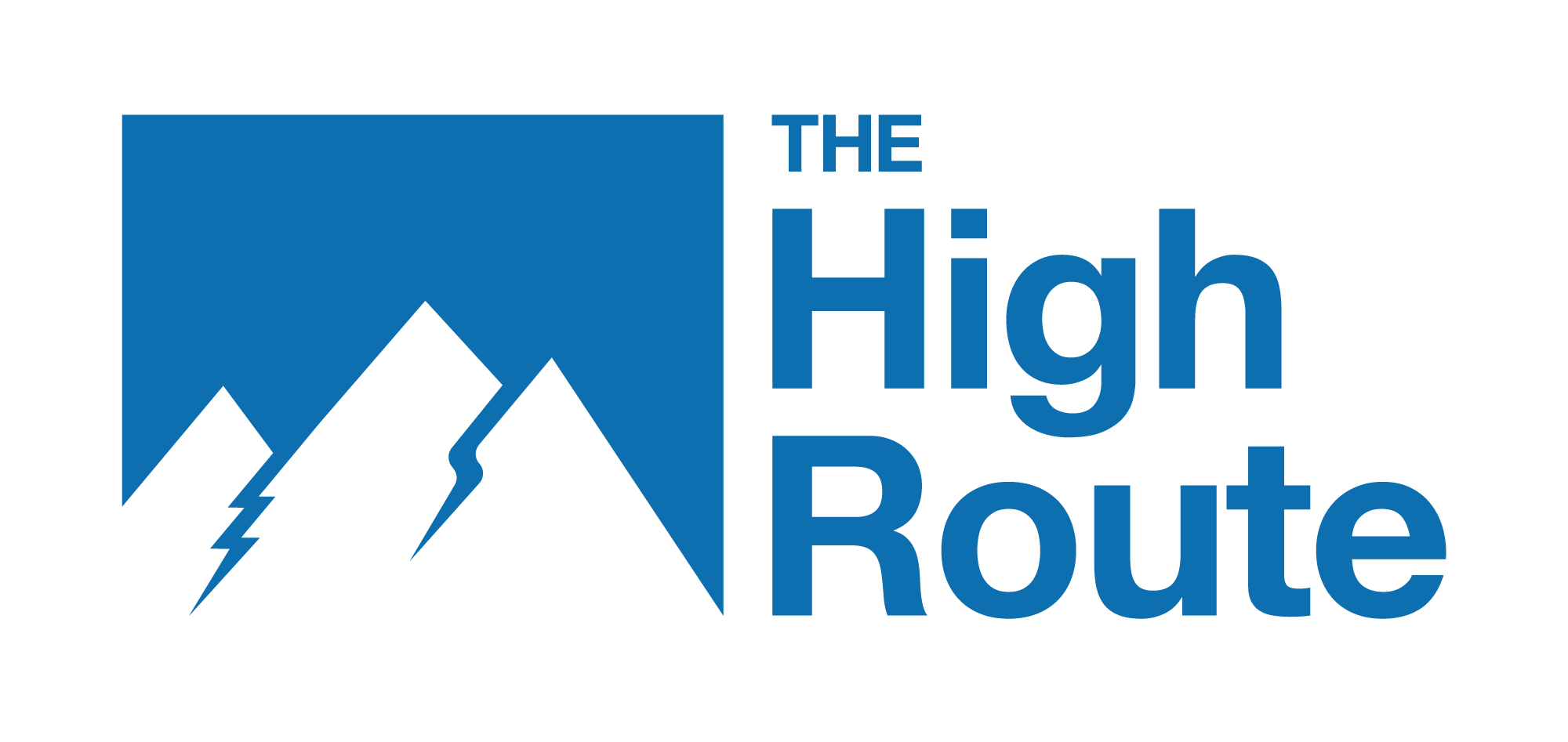
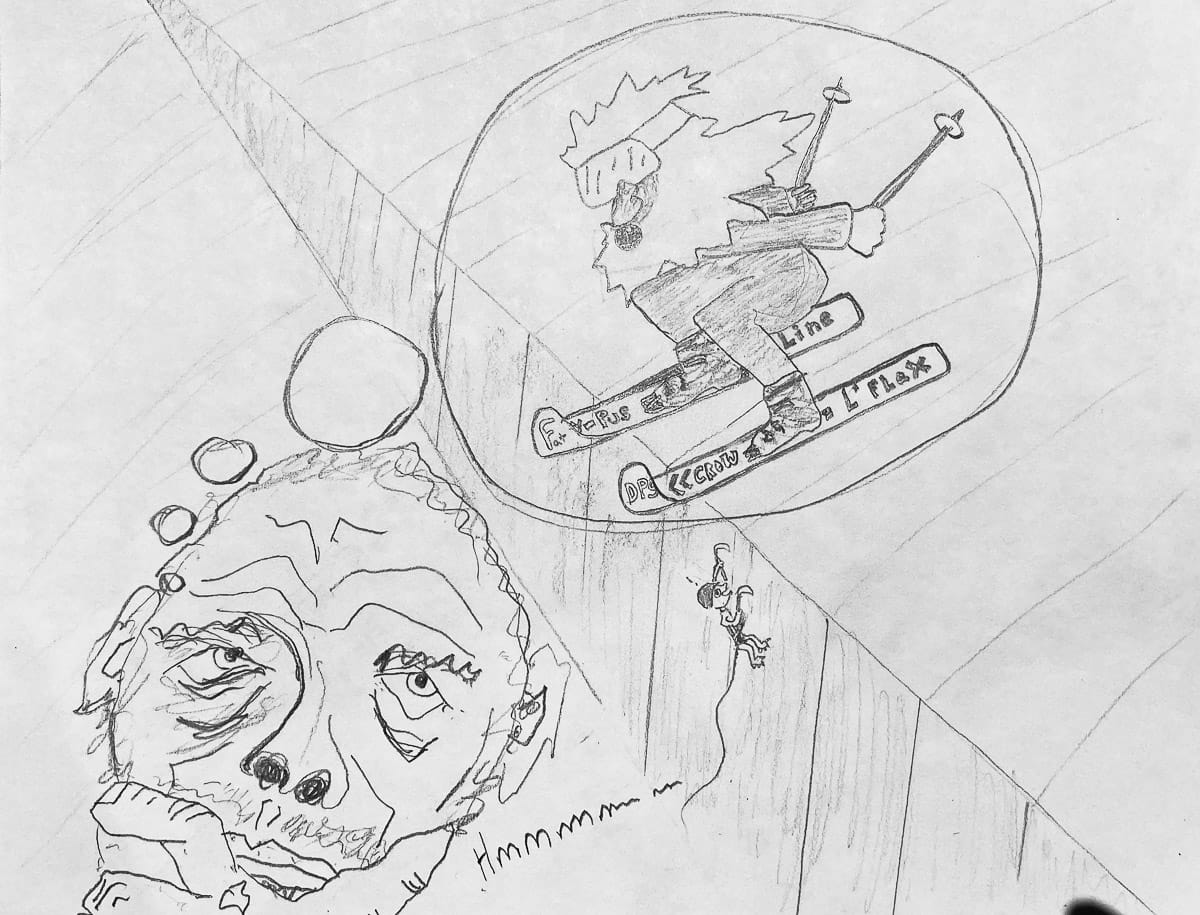
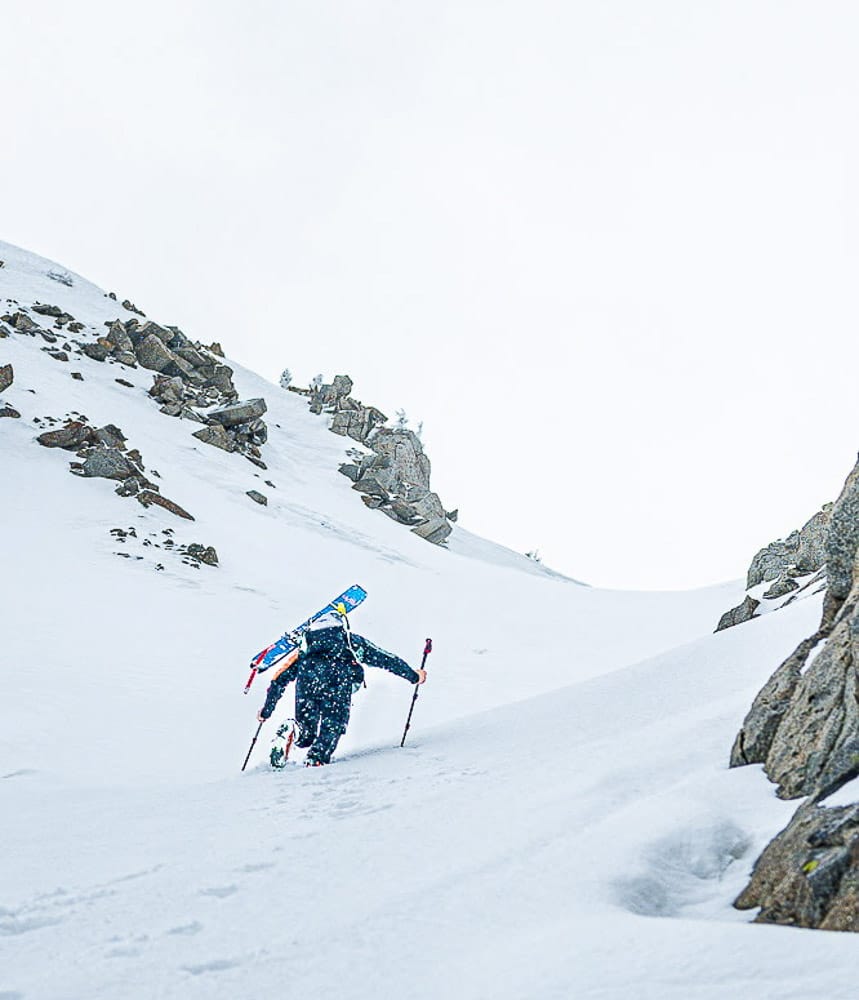
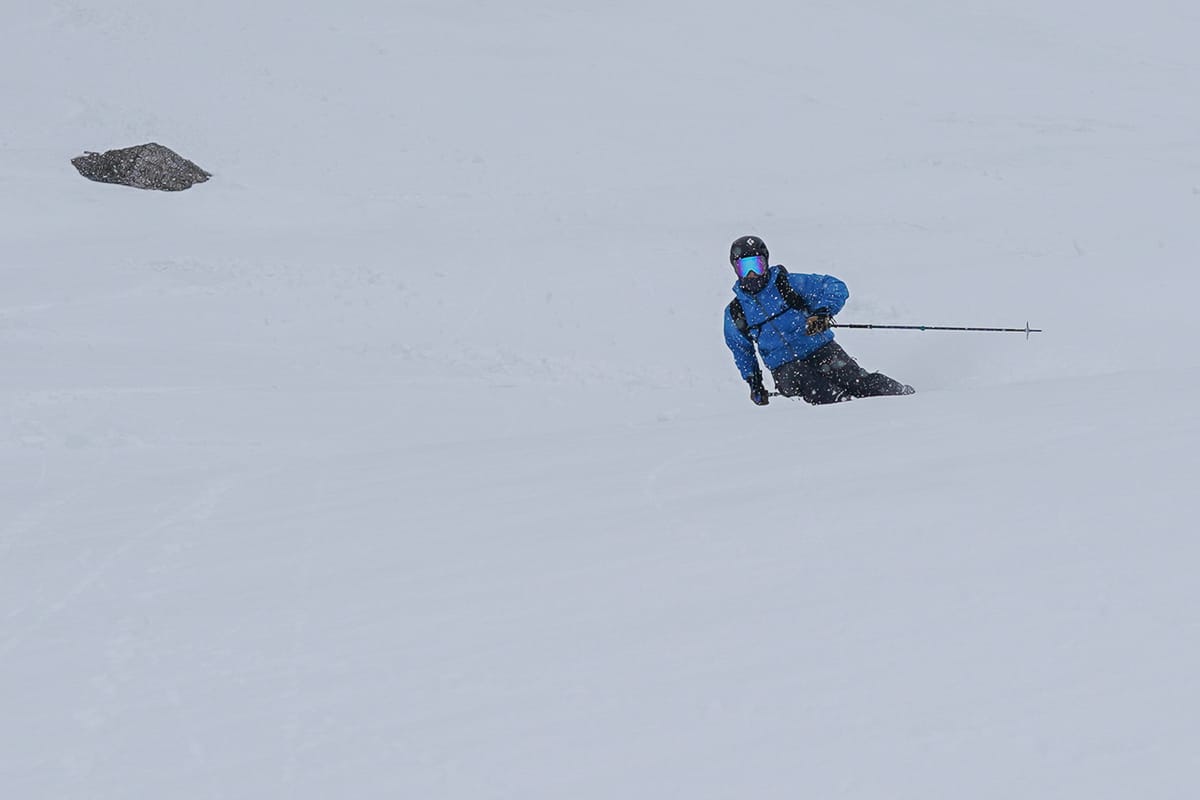

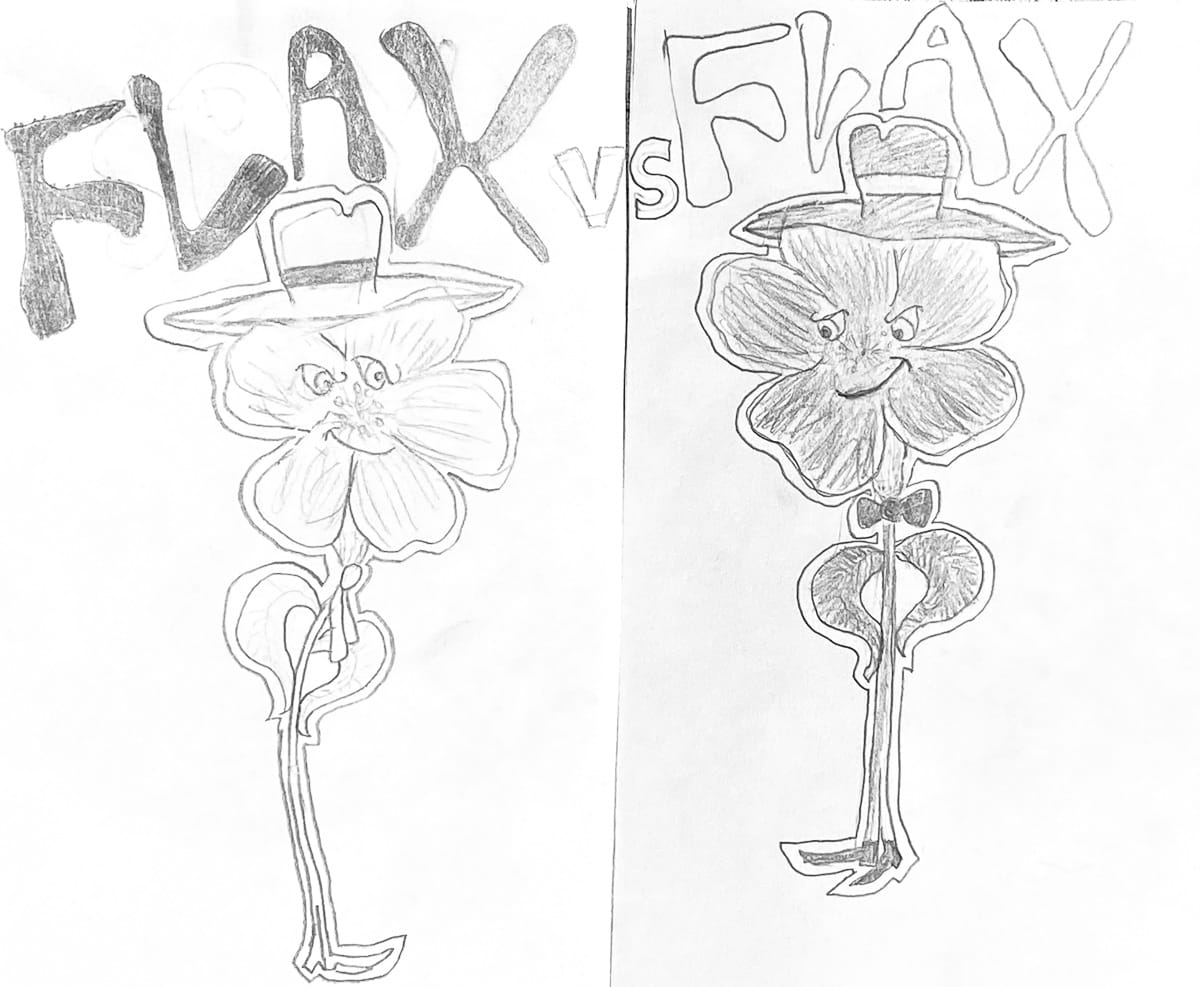

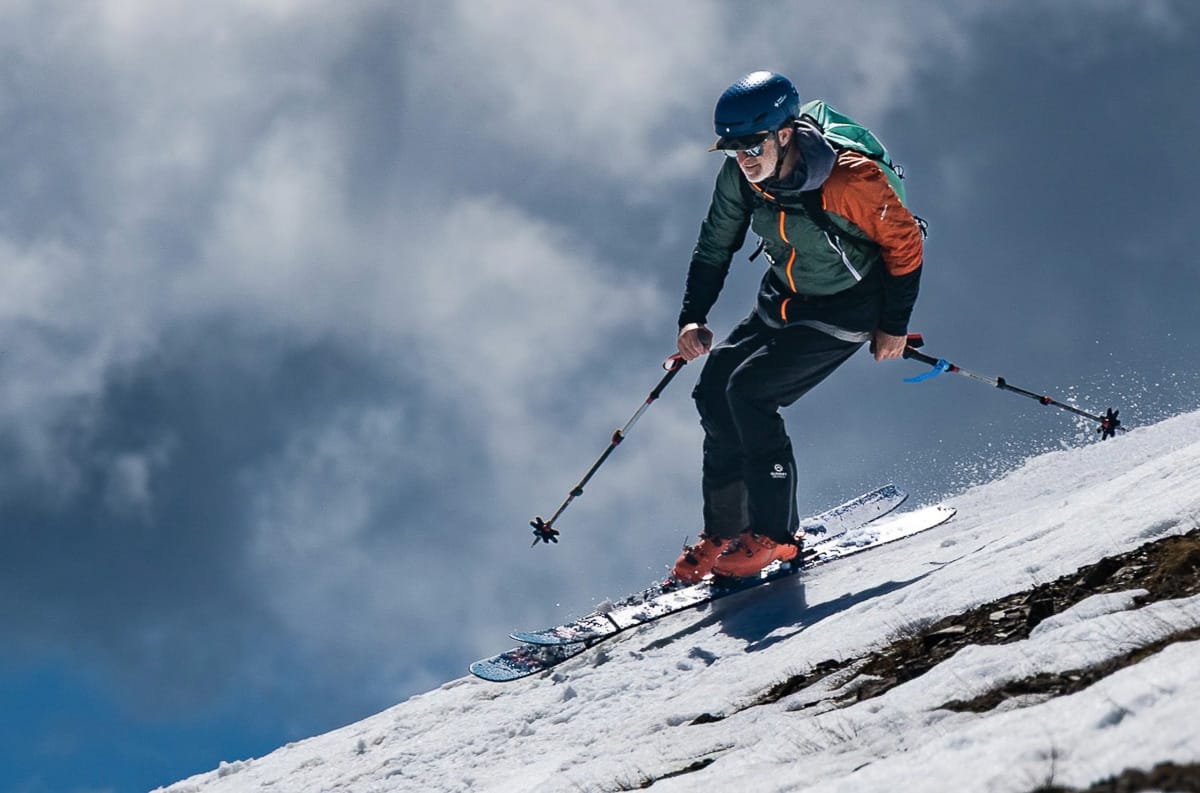
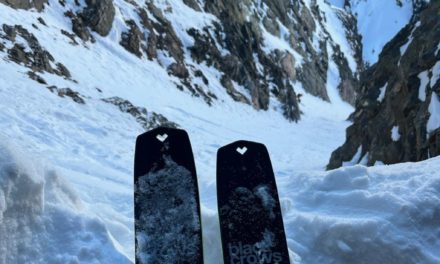
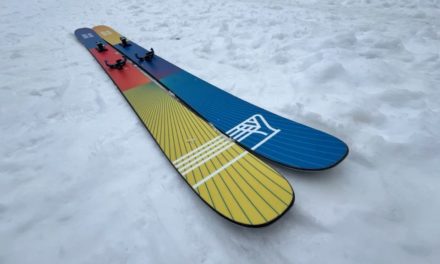
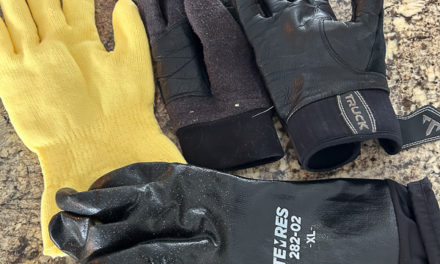
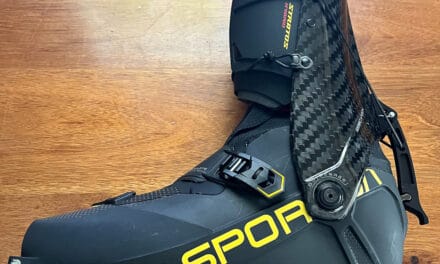
As a Solis lover I have to point out that the numerical chart is deeply flawed and biased against the French.
If the Solis was not tested in powder it should have got the same score as the highest not the lowest.
Additionally, all the other manufacturers are American companies.
I suspect ant- Frenchism and favoritism to a Slat Lake based company.
I demand a full investigation and sanctions.
But if I cant buy my way over that crevasse with more expensive and more better flax integration, I may have to deeply look at myself, and self reflection is more scary than the crevasse! Ill take 3 of each por favour… with extra flax!